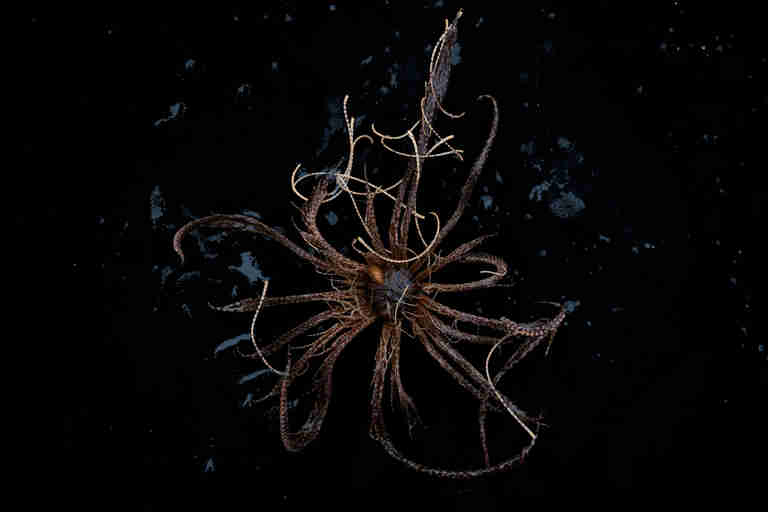Researchers from Greenpeace recently dove to the seafloor off the Antarctic peninsula in a small submarine and cataloged a rich variety of species in an area the environmental organization hopes to see protected.
“It really looks like a garden, although it’s all animals,” Greenpeace marine biologist John Hocevar told Seeker. “It’s too deep for light to penetrate, so there are no plants. But we’re seeing really dense assemblages of sponges, corals, sea squirts, bryozoans, and all kinds of relatives of sea stars.”
At more than 1,000 feet (305 meters) below the surface, the population is mostly invertebrates. The water temperature is too cold for most fish, Hocevar said. The surrounding ocean is about 1 degree below zero Celsius (30 degrees Fahrenheit), kept from freezing by the salt in the water.
The fish that do survive in the waters carry a protein in their blood that serves as a kind of natural antifreeze. The Greenpeace expedition spotted a few, including a species of crocodile icefish that researchers are still trying to identify, since few have been cataloged alive.
“You try to identify it at the species level from existing images, and they’re nearly all from specimens collected in trawls or on hooks,” Hocevar said. “Comparing this fish in its natural habitat to something that’s dead and desiccated is a little bit more challenging than I would have thought. Even the experts on some of these species have never seen one alive.”
 |
| Image of the Antarctic seafloor |
The expedition was aimed at building evidence to support the establishment of a protected marine reserve off Antarctica by an international body that oversees commercial fisheries in the high Southern latitudes. That group, the Commission for the Conservation of Antarctic Marine Living Resources, is expected to revisit the proposal in October after failing to agree on previous attempts.
Read more at Seeker


No comments:
Post a Comment